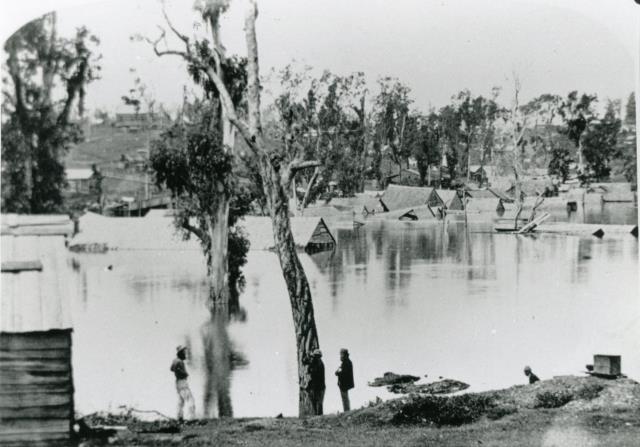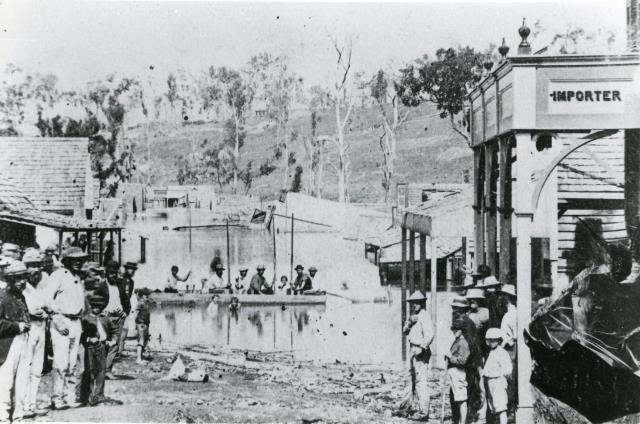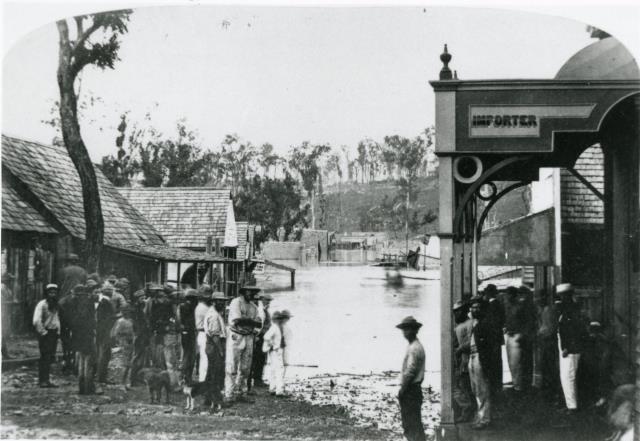
This January our region has again experienced the flooding which follows severe weather events particularly cyclones.
Every flood is regrettable for the loss of life, damage to livestock and crops and destruction of dwellings and buildings.
It is, however agreed, that the flood of 1893 was the worst Queensland and the Gympie region has ever experienced.
On February 1, 1893, a cyclone crossed the Queensland coast near Rockhampton causing major flooding.
Overnight the tropical cyclone then moved south with renowned long-range weather forecaster Inigo Jones recording a record 907 mm of rain in 24 hours to 9am at Crohamhurst near Peachester on February 3.
A 15 metre high wall of water was observed roaring down the Stanley River Gorge where it flowed into the upper reaches of the Brisbane River.
During this time, the SS Dicky ran aground because of cyclonic seas at what is now called Dicky Beach.
The Sunshine Coast was sparsely populated.
However main towns such as Maryborough and Gympie recorded loss of life and major flooding.
Brisbane floods caused widespread damage with devastating consequences due to this cyclone.
Not long after, two more cyclones caused major flooding when a cyclone crossed the coast near Bustard Head on February 11 and another cyclone tore through Southeast Queensland on February 17, 1893.
On 2 February 1893, major flooding occurred at Gympie, Maryborough, and Bundaberg.
Large portions of Gympie and Maryborough were submerged.
The Mary River was reported as being 80 feet (the official figure was 25.45 metres) above normal at Gympie.
During the afternoon the wharves at Bundaberg were reported as being under 8 feet (2.43m) of water.
There were very high tides at Sandgate on Moreton Bay near Brisbane with seawater flooding overland and large damaging waves on the beaches.
The Gympie Times and Mary River Gazette carried this report on 11 February 1893.
(This is a condensed version of that report.)
“THE FLOOD AT GYMPIE
THE FIELD ONE SHEET OF WATER
THE MINES BLOWN UP
“We reported in our previous issue that the water had reached the floor of the Theatre Royal (now the Royal Hotel on the corner of Monkland and Mary Streets) and since then the rain has been falling almost continuously.
“On Thursday and yesterday it came down in torrents, with only brief intervals of fine weather.
“At times houses could be seen going down the river, as many as five being counted on one occasion floating along with the current.
“As many as 125 houses have been counted floating down the river, and buildings upside down or on their sides are to be seen on every hand.
“The flood water reached its highest point at, 3 o’clock on Saturday morning (says the same paper of the 6th) having risen to a height of 11ft 7in. (3.3m) above the flood of 1870 until the present the highest recorded on Gympie.
“On Sunday morning, the sun came out in full force, and with the exception of a few showers, the weather was fair.
“As the water receded the work of clearing the debris from the main streets and the flooded buildings, was carried on with vigour, and by the evening many of the business premises in upper Mary Street were cleaned out.
“The water went down pretty quickly all day.
“It is impossible to estimate the damage at present, but it will run into thousands of pounds.
“Many of the houses in the low lying part of Mary Street are still submerged, and it cannot be ascertained whether they are upset or are swept from their foundation.
“The roof of some house has been carried off and deposited in front of Mr. Sudbury’s premises in Monkland Street, and lower down Mary Street, the veranda of the tenement lately occupied by Mr. J. Ireland has collapsed. leaving a yawning gap, which was speedily fenced in.
THE ONE MILE.
“Towards the One Mile, which is low lying ground, the scene is indescribable, and on every hand are to be seen houses of all sorts and sizes, household furniture, and debris of every description.
“The back yards and verandas of most of the higher buildings present a curious appearance with all sorts of articles hung out to dry, and resemble nothing so much as second hand clothes shops.
“Mrs. Tozer’s paddock is like a small settlement, and off the lower portion of the ground two houses, said to belong to Mr. A. Ball, One Mile, and Mr. Bwald, have been deposited.
“Mr. Cullinane’s drapery premises have also been further advanced towards the road and occupies half the footpath.
“A little below this the shop and residence of Mr. Wilcox, chemist, has been lifted in a whole and carried into the roadway, and is a total wreck, showing signs of collapsing altogether.
“The greatest amount of concentrated damage, however, appears to, have been suffered on the Great Eastern Road, where a complete settlement has been entirely swept away.”








